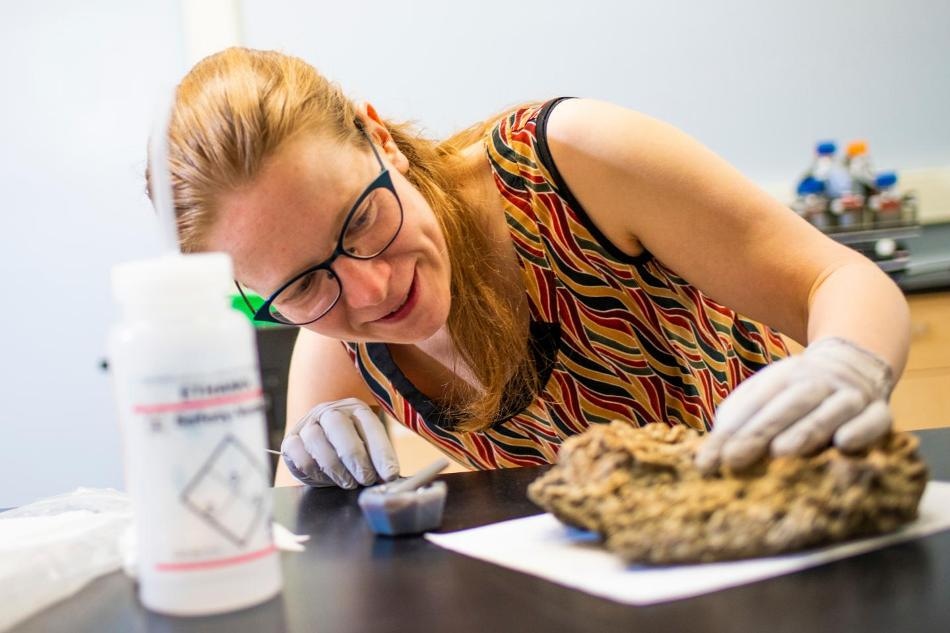Dec 13 2018
A new study performed by University of Alberta geologists and their collaborators has confirmed that carbon is being captured and stored by new minerals.
 Sasha Wilson, associate professor in the Department of Earth and Atmospheric Sciences, supervised Turvey’s research. The study identifies new minerals capable of carbon capture. (Image credit: John Ulan)
Sasha Wilson, associate professor in the Department of Earth and Atmospheric Sciences, supervised Turvey’s research. The study identifies new minerals capable of carbon capture. (Image credit: John Ulan)
Part of the hydrotalcite group, the new minerals are the first among the carbonate family to naturally sequester atmospheric CO2 in mine waste, which is significant as society goes on to find ways to reduce carbon emissions and fight climate change.
“This research confirmed that hydrotalcites are capable of sequestering atmospheric CO2 in mine waste,” stated Connor Turvey, who performed this study during his PhD studies under the guidance of Sasha Wilson. “Hydrotalcites are trapping the CO2 deeper into the tailings where carbonate minerals were unable to form.”
Mine tailings contain waste minerals removed from the ground during the mining process. Since these minerals are subjected to rainwater as well as the atmosphere, they can easily react to create novel minerals that capture atmospheric CO2.
The study emphasizes the possibility of improving the process of carbon capture 1–2 m below the surface of mining wastes, in which most sequestration normally takes place.
One thing that this indicates is that the capacity for carbon sequestration at this depth could be improved by providing a more plentiful source of carbon to those depths.
Sasha Wilson, Associate Professor, Department of Earth and Atmospheric Sciences, University of Alberta
Wilson is also an expert in economic geology.
The research was carried out at Woodsreef Asbestos Mine in New South Wales, Australia. Capture, utilization, and storage of carbon in minerals are unceasingly important for both industry and academia. This finding indicates the possibility of using mineral waste from mines to capture carbon in a more effective manner and thus support remediation efforts.
“Merely going carbon neutral is no longer going to be enough to prevent climate change from occurring,” stated Turvey. “What is now needed is for our world to become carbon negative.”
This implies that industry should lower carbon emissions and, at the same time, study carbon sequestration to actively capture surplus amounts of CO2 from the atmosphere—thus making such findings more significant than ever.
The study was performed in Wilson’s laboratory, newly relocated from Monash University, in association with the Australian National University, the University of Queensland, and the University of British Columbia.
The paper titled “Hydrotalcites and hydrated Mg-carbonates as carbon sinks in serpentinite mineral wastes from the Woodsreef chrysotile mine, New South Wales, Australia: Controls on carbonate mineralogy and efficiency of CO2 air capture in mine tailings” has been published in the International Journal of Greenhouse Gas Control.